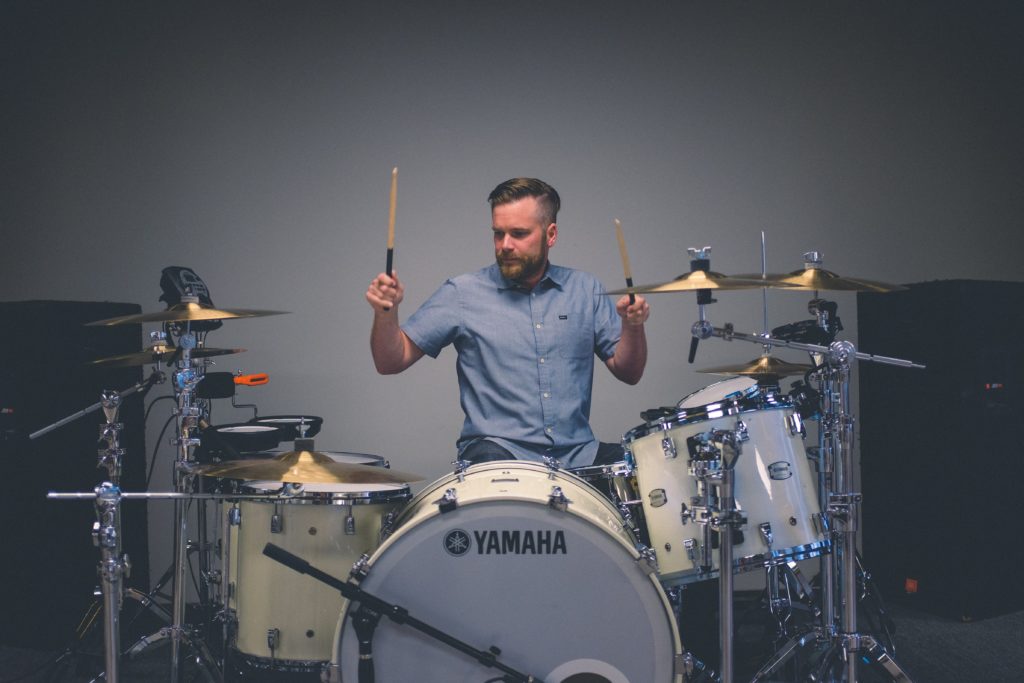Drum Set (Drums) – How Your Body Can Compromise Your Technique (Musicians)(Psychology)(Pain)(Strain)(Injuries)(Posture)(Alexander Technique)(Albuquerque)
This ebook, An Alexander Technique Approach to Drum Set (Drums) Technique, is published on this website in a PDF format. It is very detailed and practical, and it will give you the physical tools you need to take the limits off of your ability to create the accurate drums technique you want without sacrificing your body.
This ebook is also for sale on all AMAZON websites in a KINDLE format.
Located in Albuquerque, New Mexico, U.S.A. (MOVEMENT THERAPY)
WHEN YOUR POSTURE IS NOT AS GOOD AS YOUR DRUM SET TECHNIQUE, THEN YOU CANNOT PLAY AS WELL AS YOU COULD WITH A POSTURE AS GOOD AS YOUR DRUMS TECHNIQUE.
Here is a very simple explanation for this. By definition, poor posture takes a whole lot more muscle to maintain than balanced posture. Balanced posture in the Alexander Technique means that you have such a gentle balanced posture going on in your body as you play the drum set, that sitting fully upright is very close to effortless.
When a drum set player with poor posture goes to an Alexander Technique teacher who makes gentle radical changes to how the drums player sits at the drum set, why does it feel like a whole lot more work to sit at ease at the drums?
A drum set player’s posture at the drums is usually a long term devolution of the body getting in shape to handle poor posture. What does this mean? It means that over time, if your posture at the drum set becomes poorer and poorer, then your musculature handles these usually gradual changes, as you become more and more off balance, by using too much muscle and you become more and more immobile.
Think about it. If, as you age and/or try to play the drum set better and better, you hunker down and collapse your torso and tense your legs more and more, you are actually doing more and more muscular work to play the drums. So, as you get older and usually weaker, you are working harder to play the drum set, when you should be evolving a technique and posture over the years, that makes playing the drums more and more effortless to sit at and play.
If your posture is degrading over the years at the drum set, and you are tensing more and more as you go further and further off balance, then your technique is going to suffer. You cannot keep the tension of your whole body’s poor posture out of your shoulders, arms, and hands.
There is another side to this issue of posture compromising your drum set player technique. YOU CAN BE IN GOOD POSTURAL ALIGNMENT, BUT IF YOU ARE USING MORE MUSCLE THAN IS NECESSARY TO HAVE GOOD POSTURE AT THE DRUM SET, YOU WILL STILL COMPROMISE YOUR DRUMS TECHNIQUE. This is core to how the Alexander Technique works with drums players.
Simply, if you are doing UNNECESSARY work in any part of your body as you play the drum set, you will have a negative effect on your drums technique. This means the tension level will rise in your shoulders, arms, and hands.
What if you created a balanced posture that evolved using less and less muscle at the drum set over the years? What if there was constant flow in your body at the drums? What if your whole body embodied effortless drum set technique? What if you played the drums as if you were getting younger and younger every year?
